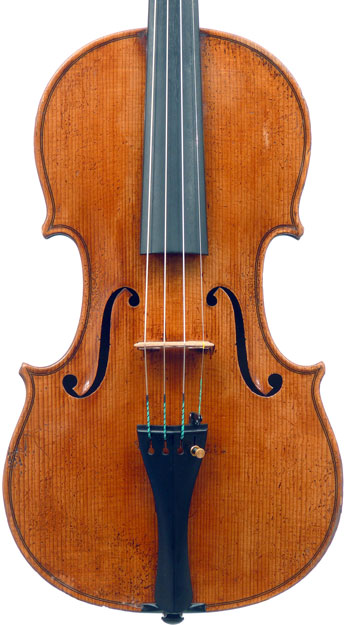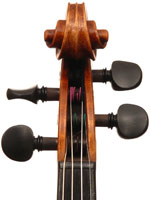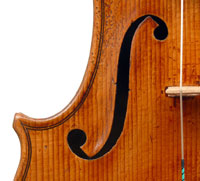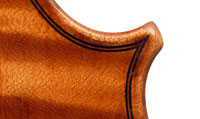|
Ref : 0901
A very good French Violin
|

go to Home Page see more Violins |
The known facts about this violin can be stated up front - it's an exceptionally well-made instrument of very attractive materials and is well-toned with a big robust and responsive sound. Workmanship in it is of a high order and it is in impeccable condition. All things considered, this is a good instrument.The loss or removal of a violin's label opens the door to endless speculation. At first glance it was apparent that this is a French instrument and if not made in France, that it was by a craftsman working within the parameters of good French lutherie. Furthermore, that is late 19th century.
One London-based authority asserted that this violin fits into what could be referred to as the Vuillaume School and that the workmanship compares to that of Nestor Audinot, but better in some ways. The feeling is further that this violin may have been made by someone who worked for one of the Vuillaumes. Furthermore, the old-style varnish and older appearance could be an indicator as to who actually made the violin, but such expertise is not available locally.
However, a Newark-trained maker with a lot of experience commented that it may be from the Hill workshop in the early 1900s. since over that period Hill employed several French violin makers in London, notably Charles Langonet and Charles Delunet. They, through the Hill firm brought strong Mirecourt influence to pre-1940 England and this violin may have been from that world. For one thing, the attention to detail with the purfling is the sort of thing that came out of that period of the Hill firm.
Some voices mentioned Italian, but this is unlikely as too much in this violin has French roots. And so this violin's authorship will probably be a subject of speculation for a long time to come, unless it could be seen by an authority in the subject.
One is struck immediately by the lovely back and ribs, of broadly curled maple with a distinct and beautiful flame. In quality the top matches with a very broad, straight and even growth lines - one of the characteristics of the Vuillaume school and believed to facilitate overtone response. The varnish is a light golden brown - very attractive and compliments the materials.
The purfling and mitres are frankly superb, the scroll is poised, balanced and beautifully graded and the Fs are crisp, sharp and tidy, beautifully shaped with elegance and nicely positioned. It is in excellent condition.
This is a very appealing instrument from every point of view.
 |
 |
 |
||
 |
Dimensions : Length of back: 35.6 cm
Condition : Excellent condition. Completely free from repairs and cracks.
Provenance : The property of Johan Grobbelaar
Price : P.O.A.
 |
 |
 |
 |
 |
 |
 |
 |
 |
 |
 |
 |
|||||
 |
 |
 |
 |